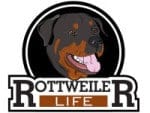No two Rottweilers are alike, not only in looks, but in personality. While my Rottweiler may be lazy and loving, your Rottweiler may be excitable and temperamental. Regardless, there are a few basic tenets of ownership you absolutely need to know. The following article provides a great deal of advice from Rottweiler owners who have experienced it all.
Be careful with your Rottweiler around Christmas season, many dangers are lurking just under the festive ambiance. For instance, electrical chords are typically strewn about during the holidays, and Rottweilers often chew them, creating an electrical hazard. Rottweilers may be tempted to eat the decorations on the tree. They may also be tempted by the tree water, which can be toxic.
Groom your Rottweiler regularly. A Rottweiler requires constant grooming to keep his coat in tip top condition. Make sure that your Rottweiler is completely relaxed before you start the grooming session; this is especially important if he is excitable. Keep the session quite short (5 to 10 minutes at most) until he is comfortable with the idea of being groomed. Most importantly – be sure to praise him and offer a treat after a successful grooming session!
Attack
When you have medications of any sort, keep them where your Rottweiler cannot get to it. Taking just a few such pills can have devastating consequences for a Rottweiler. If the Rottweiler does consume some medication, contact your veterinarian immediately.
Tail
When preparing to groom your pet, start the session off on the right foot by helping your Rottweiler relax. Spend a few minutes simply petting him, starting with the head and then rubbing the back, paws, belly and even tail. Once you feel your Rottweiler is happy and content, begin grooming him.
Lift your Rottweiler properly. If you have a little Rottweiler or puppy, place your one hand under their chest and use your other hand for supporting their rump and hind legs. If you’re lifting a big Rottweiler, lift them from their underside supporting their chest using your one arm and using your other arm to support their rear end. Never lift a Rottweiler by their back legs, tail, or the nape of their neck.
Coat
If your Rottweiler spends a lot of time outdoors, he or she may eventually come in contact with a skunk. If he gets sprayed, mix together one teaspoon of dish-washing detergent, a fourth a cup of baking soda and a quart of hydrogen peroxide solution (but make sure it is no more than three percent). Apply the mixture to your Rottweiler’s coat and allow it to sit for five minutes. Wash your Rottweiler off well afterward.
Some people think that it is necessary to bath a Rottweiler often. The truth is that unless your Rottweiler gets into something to get dirty, they only need bathed once every two to four months. Bathing more often could strip their skin of the oils they need for a healthy coat and skin.
Nails
Although the sound may be cute, your Rottweiler’s nails shouldn’t click along the floor when it walks. That’s a sign that the nails are too long. The nails should actually just barely touch the ground. Seek the advice of a professional on what tools are the best for giving your Rottweiler a pedicure.
If your Rottweiler has long hair, make sure to take the time to trim the fur around his feet. If you allow your Rottweiler’s hair to grow too long, they can get things stuck in their fur. This could lead to injuries between the pads of the feet and around the nails.
When you are trimming your Rottweiler’s nails, keep a close eye on the tips of the nails. Once you see a pale oval on the tip, stop clipping. This is a sign that you are close to the vein. If you go too far, apply a little bit of styptic powder to it to help stop the bleeding.
Teeth
Brushing your Rottweiler’s teeth is important, but it is not easy. If your Rottweiler is resisting, once a day simply lift their lips and use your finger to rub their teeth lightly. Do it quickly at first, and then begin to draw out the time you spend performing this action. This will help them get use to the process. After that, you can begin using an actual brush and toothpaste.
Take your grown Rottweiler to the vet at least once a year. The vet will check to see if the Rottweiler’s vaccines up to date. In addition, the vet will check the Rottweiler’s teeth and vital signs. If any major health or behavioral issues come up between annual checkups, you should see the vet earlier.
Jump
Rottweiler training requires you to be consistent. Once you decide you want to establish a rule for your Rottweiler, do not make any exceptions. Make sure everyone at home helps you enforce the rule and encourage your guests not to let your Rottweiler jump on them or to not acknowledge your Rottweiler when it barks.
When training your Rottweiler, consistency is everything. You must be consistent at all times. If your Rottweiler is not allowed to jump on people as they walk in, don’t allow your Rottweiler to do it even if a person says they don’t mind being jumped on. You should also make sure that everyone that’s around your Rottweiler understands your rules and are consistent with them.
Never approach a Rottweiler you are unfamiliar with. Teach your children the same thing. An unfamiliar Rottweiler may look friendly, but he could have a vicious bite. Even if he is not a biter, he might jump on you, potentially causing harm. Always ask his owner for permission before approaching him.
Rottweilers of all shapes and sizes make for amazing pets, and a great owner takes the time to learn all about their care. You have done just that, so use the tips you have read here to get down to business. A few simple changes or lessons can really make your Rottweiler the happiest he can be.



